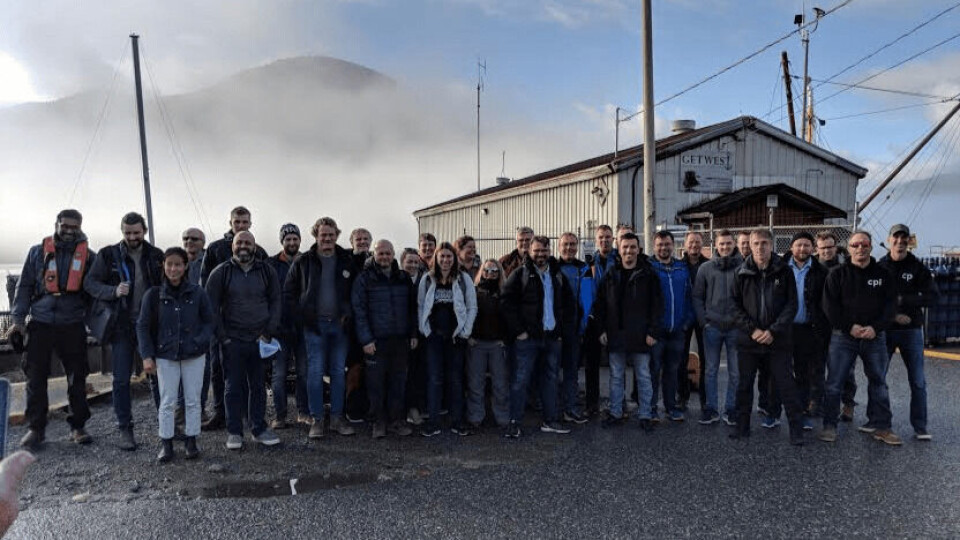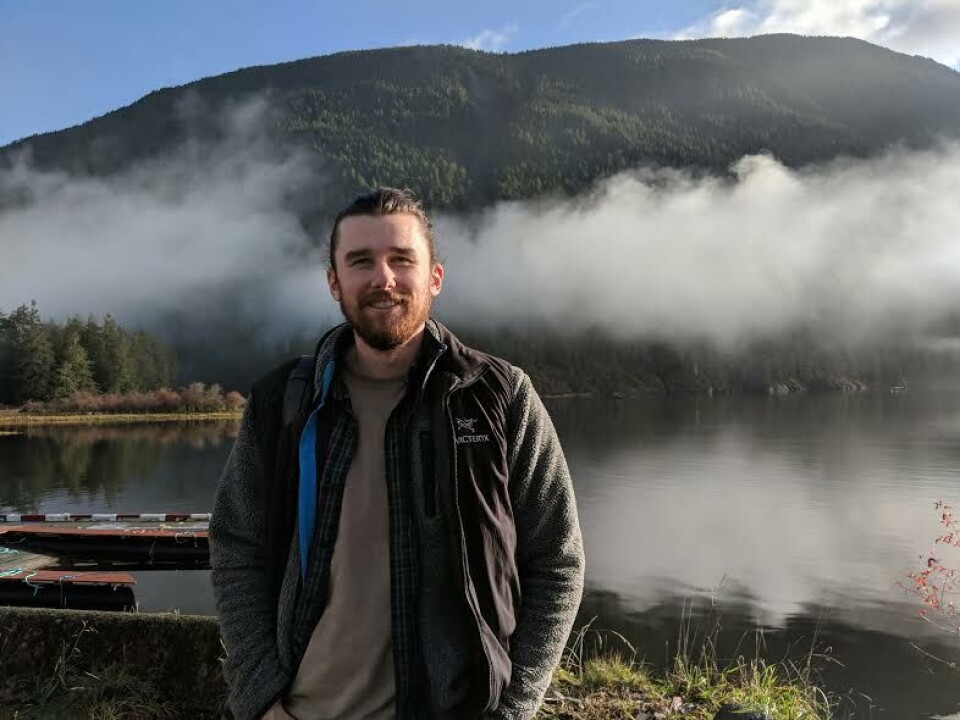
Norwegians visit BC to study algal bloom defence
Grieg Seafood hosted 29 members of the Norwegian Seafood Association during a study trip to one of their salmon farms located in Gold River, south west of Campbell River in British Columbia, western Canada.
The main purpose of the trip was to study the mitigation of harmful algal blooms and share that information back in Norway.
“Today we are taking a group of region salmon farmers out to a site to show them what it's like to be farming in an area that deals with harmful algae on a regular basis,” said Liam Peck, environmental monitoring specialist at Grieg Seafood BC.
Mitigate the problems
“We will share how we mitigate the problems and how we deal with it on a daily basis. We will show them exactly what we're doing so that they can take some ideas from us and help with the issues that they're seeing now in Norway with harmful algae.”
“Canadians are using some of the techniques that we hope to share,” added Peck. “Here in BC we have a real focus on data collection - proper data collection and increased data collection. A lot of the stuff that we're doing is around assessing the environment in relationship to harmful algae and the presence of toxicity. We are instituting platforms and programs that help us better predict and better manage the harmful blooms that we deal with on a regular basis.”
HAMP
Salmon farms located in Northern Norway encountered a harmful algae bloom event in May that killed around eight million fish. The country currently does not have a harmful algae bloom monitoring program. There was a program in place before 2010 but it was cut due to the decrease in harmful algae bloom events. Since there were very few events the program was not beneficial at the time.

“We use the Harmful Algae Monitoring Program (HAMP) here in BC and they are a third party. They do harmful algae monitoring for all of the major companies in the area including Grieg,” said Peck.
HAMP helps analyze site data supplied by Grieg’s site farmers and technicians. The BC farmers and technicians collect data a minimum of twice a day. They analyze the real time information before sending it to HAMP. If the real time data suggests there is an issue the “bloom protocol” is put into action, at which point information is shared and mitigation tactics are deployed.
“Each one of the salmon-producing companies has their own way of collecting data around ecology and monitoring,” explained Peck. “Together we're working on a universal platform that will help to understand how the area works as a whole, and not just individual regions. I think it will be really beneficial for everyone in the area.
Devastating
“Algae blooms are very infrequent in Norway so when they happen they happen in a fairly devastating fashion. Whereas in BC, we almost expect them to happen every year so we have a better sense of how to deal with them.
“We monitor for about 20 harmful species of phytoplankton that are considered to be harmful to fish in BC and each of those 20 has a different method of harm, whether it’s toxicity, mechanical damage or mechanical irritation to the gills. They might just deplete off oxygen once they're finished their life cycle. Then in turn that reduces oxygen in the environments which deprives the fish.”
Grieg has had issues with the heterosigma species of algae. Anytime water temperatures reach 15°C the algae becomes very harmful. There is a decrease in salinity from around 30 parts per thousand to 15 parts per thousand during which time the algae becomes harmful to the fish.
”We are not 100% certain whether it's a toxic producer and, if it is toxic producer, what that toxin is. It's definitely very harmful to fish and even in low concentrations we do consider it a toxic producer just based on these characteristics and how we see the fish respond to that,” said Peck.
Grieg dealt with a significant algae bloom event in 2018 that killed almost 250,000 fish. So far 2019 has had an increased number of cautionary days but no devastating events have occurred.
Idea blueprint
“There was a lot of talk today about monitoring,” said Knut Steffen Solvag, research and development manager for Selstad, which supplies equipment to the aquaculture industry. The company produces nets, ropes, safety equipment and other equipment to help farmers grow fish.























































